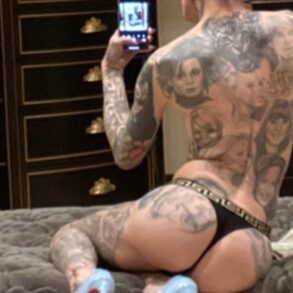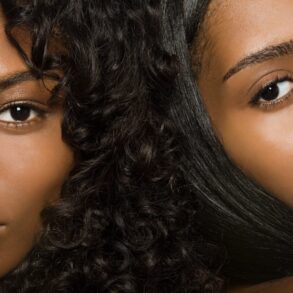
Right before Sha’Carri Richardson smoked the field in the 100-meter final at the U.S. Outdoor Track and Field Championships in Eugene, Oregon, in July, the 23-year-old star sprinter sent a thrilling message to every Black woman who’s ever been shamed for her hairstyle and never felt fully free to be herself.
Richardson pulled off her signature bright-orange wig and threw it to the side, exposing the braids underneath. She then won the U.S. title by posting the fastest time by an American woman since 2011. After the race, Richardson boasted to reporters, “I’m not back. I’m better.”
Richardson told no lies. The larger point was that, whether she’s wearing her hair unadorned or in any of a number of exuberant colors, it’s a source of distinction and even power—and a challenge to the criticism that other Black women have faced.
Richardson has shown fans many different looks during her career: blue, platinum blond, red, wavy, sleek, curly. Last week, she concluded her spectacular track season with another viral hair moment—when she ran the Diamond League final without a wig or braids. “I had to pull out the natural,” she said afterward. It was appropriate punctuation to a season that also included her running the sixth-fastest time ever in the 100 meters at the Miramar Invitational and besting her elite Jamaican competitors to win the gold medal at the world championships in August.
Her recent triumphs are quite a departure from how many people viewed Richardson two years ago, when she was disqualified from the 2021 Olympic Games in Tokyo for a positive marijuana test. She was suspended from competition for a month. Back then, she was a disappointment—someone critics saw as lacking humility, shirking responsibility, and wasting her ample talent. Richardson explained that she had turned to marijuana to cope with her biological mother’s death, which she had the misfortune of learning about from a reporter a few days before competing in the national track-and-field championships. But for some, that did not make her more sympathetic. Richardson tweeted: “I’m sorry, I can’t be y’all Olympic Champ this year but I promise I’ll be your World Champ next year.”
Richardson’s steady comeback has been one of the most compelling stories in sports—and that story has been intertwined with her insistence on presenting herself however she likes.
Beyond simple personal expression, Richardson’s hair is also an engagement with history. Black women’s beauty choices have long been used to justify racism and anti-Black discrimination. An 18th-century Louisiana law required Black women to cover their hair completely in public, lest their braided and intricate hairstyles prove too irresistible to white men. It took a landmark Supreme Court case in 1976 to prohibit employers from discriminating against people who wore Afros. Twenty-four states have now passed legislation, known as the CROWN Act, to address bias against Black hairstyles, but the need for such legal protections speaks to how polarizing the subject remains. One survey earlier this year found that in the workplace, Black women are two and a half times more likely to have their hair perceived as unprofessional than their female co-workers. Black Americans’ bodies have always been policed, right down to the roots of their hair.
Richardson is the latest in a long line of prominent Black American women who have fought back against norms established and enforced by people whose natural hair texture doesn’t look like theirs. The political activist Angela Davis’s Afro became the indelible image of Black liberation. The track legend Florence Griffith Joyner’s long, glorious tresses gave the public an enduring image of unabashed freedom. Serena Williams’s and Venus Williams’s beaded braids were a reminder to little Black girls that being themselves was, and always would be, enough.
Fortunately, as Richardson worked to reclaim her position as the top female American sprinter, she kept chasing glory on her own terms—which include not only a broad range of hairstyles but also voluminous eyelashes and bright acrylic nails. Her hair has come to symbolize rebirth.
“I’m having so much more fun, and I want people to understand it is not just because of winning,” she told reporters recently. “I’m having fun because I’m better within my spirit, within my mind, within my community that I created for myself. That’s the happiness that you guys see. The wins are just the bonus, but it shows when you’re whole within yourself what you will attract.”
Richardson’s hair speaks to the complexity of her journey, signaling joy, imagination, defiance, authenticity, and excellence—sometimes all at once.
This post was originally published on this site be sure to check out more of their content.









